A Look At Salesforce.com's Future World Headquarters
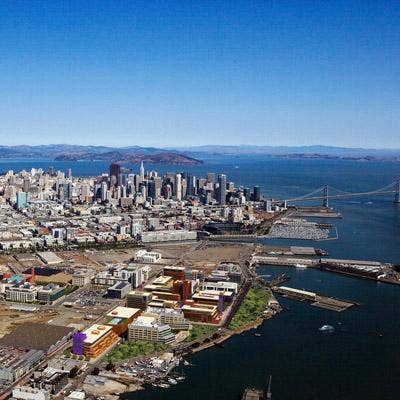
Salesforce.com: Big Cloud On Campus
Salesforce.com is outgrowing its current digs at The Landmark Building at One Market Street in San Francisco. Thinking big, the company acquired almost 14 acres of undeveloped land in San Francisco's Mission Bay neighborhood where it plans to build a new headquarters campus totaling almost 2 million square feet of office space.
The property is on San Francisco's east side between the University of California at San Francisco campus and San Francisco Bay. AT&T Park can be seen just to the north.
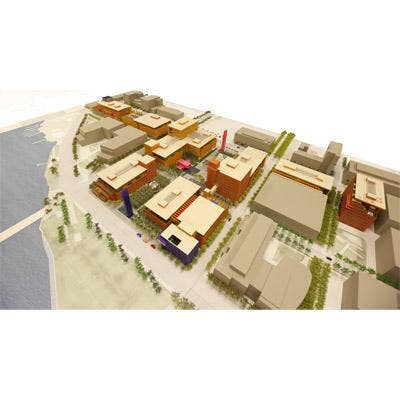
The Big Picture
Here's the proposed layout for the eight-building campus. Salesforce describes the pictures as "preliminary plans" for the development. Why the need for so much space? Salesforce racked up $1.66 billion in sales in fiscal 2011 (ended Jan. 31), up 27 percent from $1.31 billion in fiscal 2010. And CEO Marc Benioff has said the company anticipates surpassing $2 billion in sales in the current fiscal year.
The campus is being designed by the architectural firm Legorreta + Legorreta of Mexico City, which Salesforce said brings its distinctive mix of colors, light and texture to the designs. Flad Architects of Madison, Wisc., is listed as the project's executive architects.
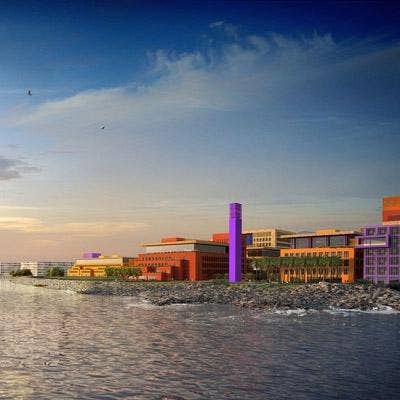
The View From The Bay
This artist rendering shows what the campus will look like from the bay.
’Our new campus will be a place where our employees and the community can connect, collaborate and be inspired by the world around them,’ said Marc Benioff, chairman and CEO, salesforce.com, in a statement issued with the drawings. ’Legorreta + Legorreta’s stunning design gives physical evidence of salesforce.com’s philosophy of innovation.’
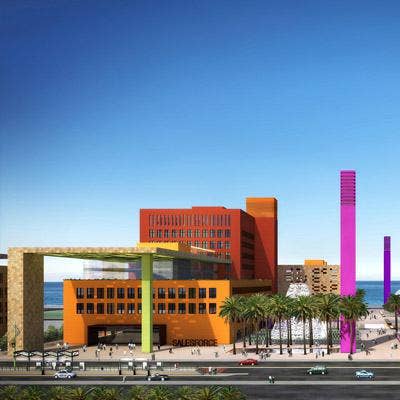
The View From The Street
A view of the campus from the Olive Street entrance.
’The design of the salesforce.com Mission Bay headquarters captures the innovative spirit of San Francisco and promises to be a bold addition to our skyline,’ said San Francisco Mayor Ed Lee, in the statement. ’The new headquarters and its vibrant design are proof that San Francisco is the place where the next generation of technology leaders wants to work and live.’
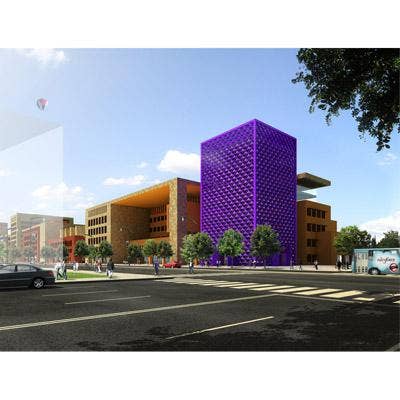
The Tangerine Building
Salesforce refers to this as the "Tangerine Building" at the intersection of 3rd and Mariposa streets.
"Designing the Salesforce.com campus is both an incredible opportunity and an incredible responsibility to create a new urban center for the city of San Francisco," said Victor Legorreta, principal architect, Legorreta + Legorreta, in the statement. "The goal is to build an open and lively urban campus that both the community and salesforce.com can enjoy."
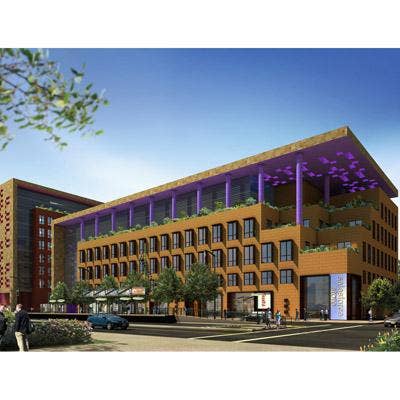
Color-Coded
Salesforce identifies these as the Jacaranda and Pink buildings.
The development is located on the San Francisco Muni T line at the University of California at San Francisco station. It's also directly accessible from the Mariposa Street exit off of Rt. 280.
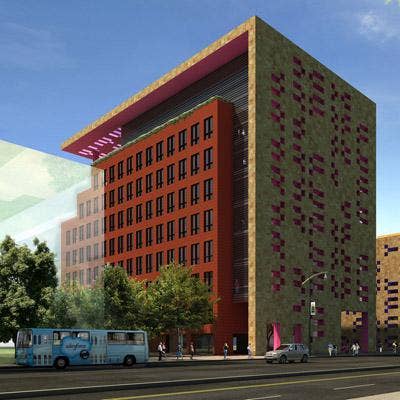
Color By Numbers
Here is what Salesforce calls the Olive Building, with the Pink and Jacaranda buildings visible to the right.
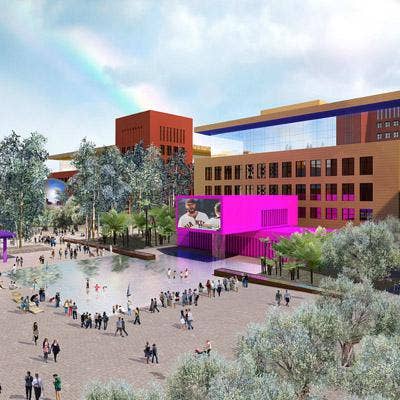
The Town Square
Salesforce calls this the "Town Square." Note the San Francisco Giants on the big screen. Are those people wading in the pool or are they walking on water?
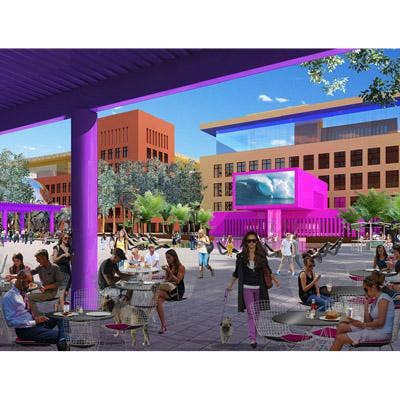
More Than An Office Park
Here's what Salesforce calls the "Town Square Cafe."
In addition to the 2 million square feet of office space the development will include space for shops, restaurants, plazas and parks.
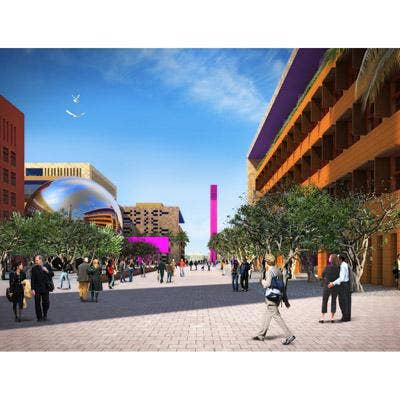
Developing Story
This is what Salesforce calls "The Olive Grove."
The project architects are working with the staffs of the San Francisco Redevelopment Agency and San Francisco Planning Department to create a campus that will "meld workplace with vibrant urban community," Salesforce said. The property is part of the Mission Bay Redevelopment Area.
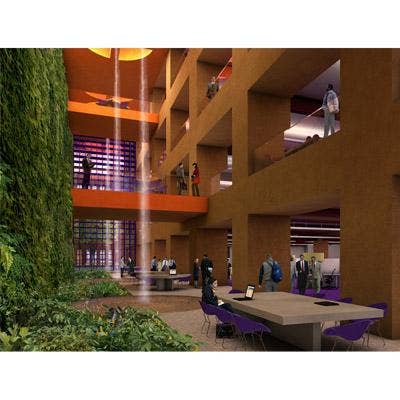
A Look Inside
An internal courtyard inside one of the campus buildings.
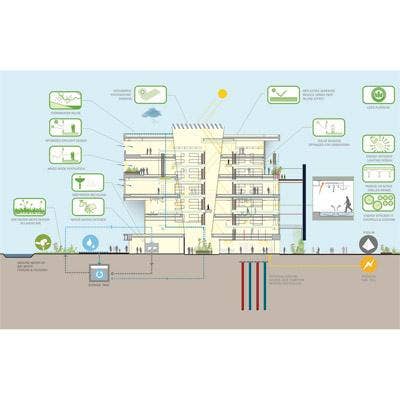
Going Green
Salesforce is vowing to make its new campus a "green" development and is striving for LEED (Leadership in Energy and Environmental Design) platinum-level certification, as defined by the U.S. Green Building Council.
The company is exploring ways to reduce water use, reduce energy usage, and make use of alternative energy sources, natural daylight and sustainable building materials.
As depicted in this drawing, the campus building designs could include integrated photovoltaic shading, mixed-mode ventilation, stormwater reuse, and gray water recycling. The plan even indicates the possible use of fuel cells and the potential to use a ground-source heat pump for heating and cooling.